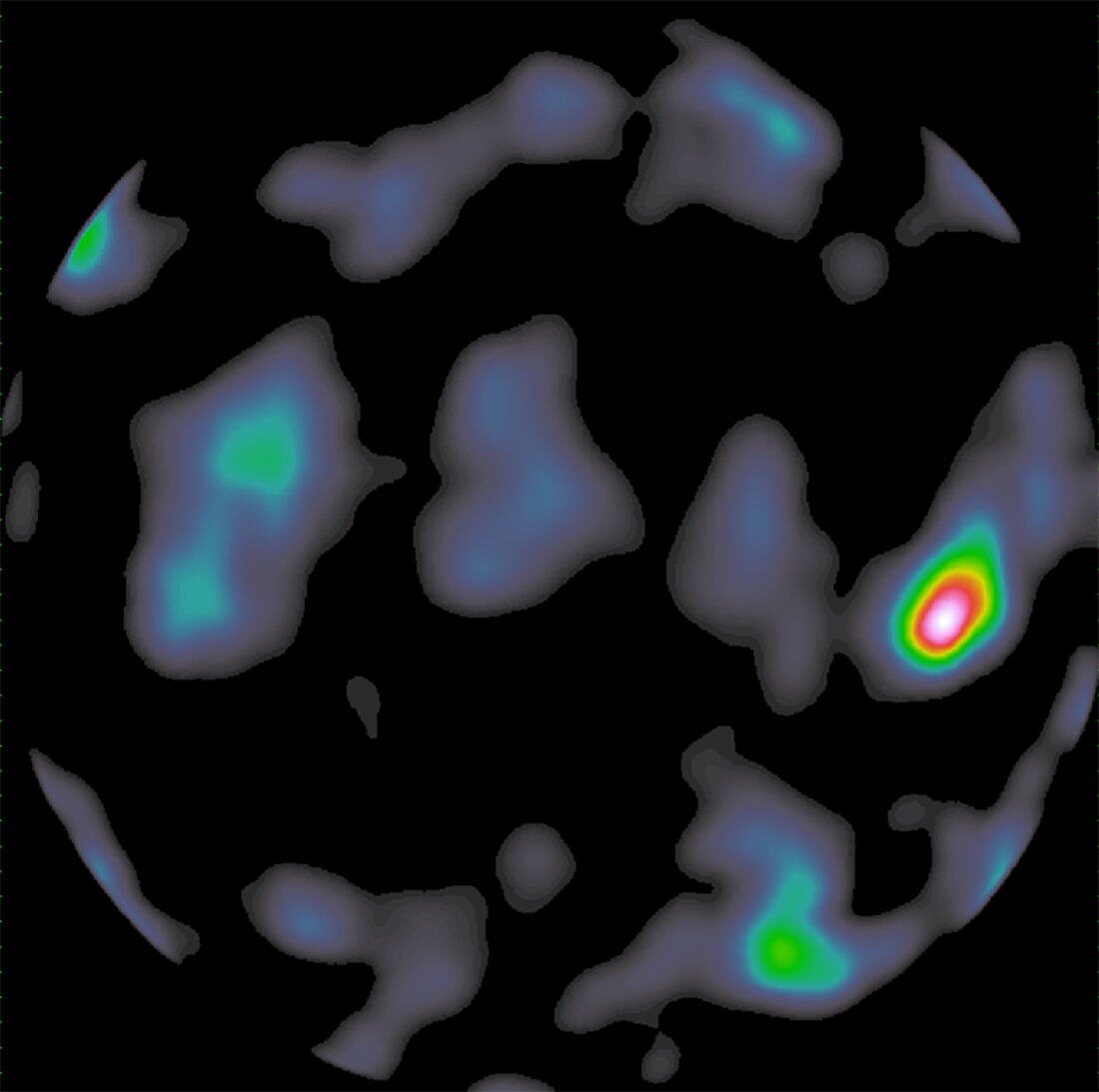Create a free profile to get unlimited access to exclusive videos, sweepstakes, and more!
When the Earth Hulks out: Our planet sparkles in gamma-rays

For many years I worked on the Education and Public Outreach program for several high-energy satellites like Swift, Fermi, XMM-Newton, and others. These are space-based observatories that observe the Universe in X-rays and gamma rays; very high-energy forms of light. It takes extremely energetic objects to make such light, so I wrote a lot about exploding stars, neutron stars, black holes, gamma-ray bursts, and other terrifying events.
Making gamma rays on Earth is hard; it takes a lot of energy. One way is to detonate a nuclear weapon, but that tends to have other issues involved with it. But even the most powerful non-nuclear bomb doesn’t come close to being able to make gamma rays.
And yet, the Earth itself generates lots of them, all the time!
That image is from the Atmosphere-Space Interactions Monitor (ASIM), a detector that’s located on the outside of the International Space Station. Instead of pointing out toward space, it points down at our planet, mapping the location of mysterious Terrestrial Gamma-ray Flashes (or TGFs). These rapid bursts of gamma rays coming from Earth were first detected in the 1990s (by the Compton Gamma-ray Observatory, which was an astronomical satellite but could see gamma rays coming from anywhere in its sky, which includes Earth). In the ASIM image you can clearly see a large flash on the right — whatever that is, it’s a decent source of gamma rays. So what is it?
The answer to that is both surprising and mundane: Lightning.
When these events were first discovered, it didn’t take long to figure out that the most likely events causing them were lighting storms. Huge energies are moved around very rapidly in a lightning bolt, so it seemed obvious enough. But how were gamma rays generated, exactly?
Yeah, about that: We still don’t know. Not exactly. The general idea is that inside a storm cloud you get huge electric potentials built up due to winds. As I have written before on this topic:
The details are complex, but ice crystals are swept along in rising and falling columns of air inside a cloud. As they rub against each other, a static charge is built up. Small, positively charged ice crystals flow upward, but heavier, more lumpy collections of ice, called graupel, get a negative charge, and fall. This separation of charges can create a vast voltage difference, and nature doesn’t care to maintain something like that for long. To balance it, a tremendous and sudden flow of electricity is triggered: lightning.
The powerful electric field can accelerate electrons to incredible speeds even over short distances… and by incredible, I mean pretty close to the speed of light! At this point, though, the details get fuzzy. One idea is that as an electron screams away from the cloud it encounters molecules in our atmosphere, like diatomic nitrogen (two nitrogen atoms bound together; this molecule makes up over ¾ of our air). If it flies close enough to the atomic nucleus in one of the nitrogen atoms, the positive charge of the protons there attracts the electron, bending its path.
A fundamental rule of physics is that if you accelerate a charged particle — either change its speed or its direction — it will emit light. The more it changes, the higher energy light it emits. An electron moving at nearly 300,000 kilometers per second has a lot of energy to give up, and if it gets close enough to the nitrogen nucleus it gets bent so much it can emit a gamma ray. This type of emission is called Brehmsstrahlung (literally, “braking radiation” in German*). It’s a common way to make light; electrons bending around magnetic fields in space emit this kind of light all the time.
So this might be the way gamma rays are made in lightning storms, but it’s not clear. But the connection to them is clear; timing of TGFs has pinned them to lightning flashes.
And all this is why ASIM was built and launched up to ISS in the first place. Scientists love a mystery, and TGFs are a good one. The Modular X and Gamma Ray Instrument (abbreviated to MXGS for some reason) on ASIF is designed to observe them and pinpoint their location.
Now mind you, this is pretty hard to do. You can’t focus gamma rays with mirrors or lenses; gamma ray photons pass right through such things. So MXGS does something extraordinarily clever: In front of the detector is a mask opaque to gamma rays, but also has lots of holes poked in it in a semi-random distribution. When a TGF occurs, the gamma rays pass through the holes and illuminate the detector in a specific pattern depending on the direction to the flash. A complicated algorithm can then work that pattern backwards to determine the direction to the flash. This type of coded aperture mask was pioneered on the Burst Alert Telescope on Swift and works really well, generating a pretty measurement of the direction to a flash without having to focus the light.
The ASIM image above is just such a detection. You can see the edge of the round Earth in the image, a few weak detections here and there, and a bright flash that was pinpointed to be right over a thunderstorm in Borneo! By coordinating these observations with ground-based measurements of the storm, scientists can learn a lot more about how these ferociously high-energy bursts of light are generated.
One question I’ve had for a while: Are TGFs associated with upward-directed discharges like red sprites and blue jets? These bizarre and gorgeous phenomena were anecdotal for years (usually seen by pilots in darkened cabins at night) because they’re faint, happen rapidly, and start at the top of a cloud and move upward; getting photos of them is incredibly difficult (it helps if a storm is on the horizon, so you can see lots of sky above it, but the distance makes the phenomena even fainter). The advent of digital cameras made that easier, and now images of them abound. They’re extensively studied by scientists, but a lot of questions remain on how they form, and what effect (if any) they have on the atmosphere.
Incidentally, if you generate a high enough energy gamma ray, it can convert itself from energy into matter, making an electron-positron pair… in other words, matter and antimatter! I don’t think collecting them will be sufficient to power a starship, but it’s incredible to think processes like this go on around us all the time, and until recently we had no idea.
That’s yet another cool thing about science; it lets you see an invisible Universe that you’re soaking in without even knowing it.
Except, now you do know. And there’s still lots more to discover.
*Sometimes people call this "Brehmsstrahlung radiation," which can be used to get money from an ATM machine if you forget your PIN number, and etc.




























